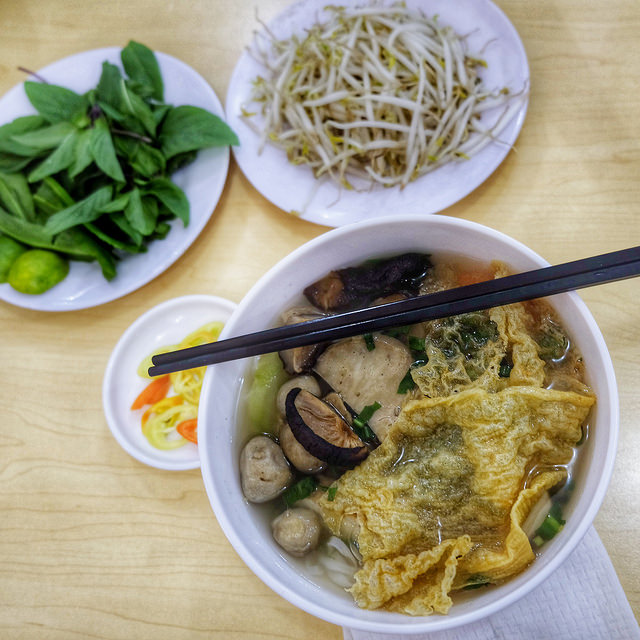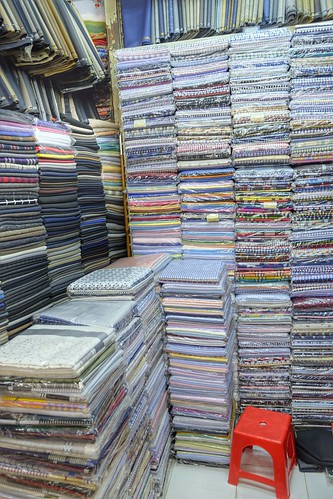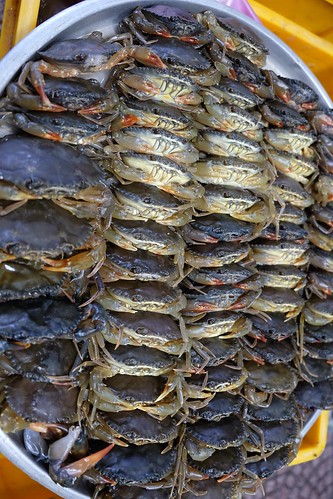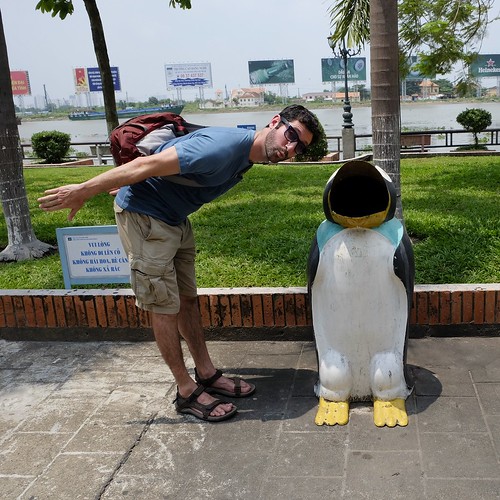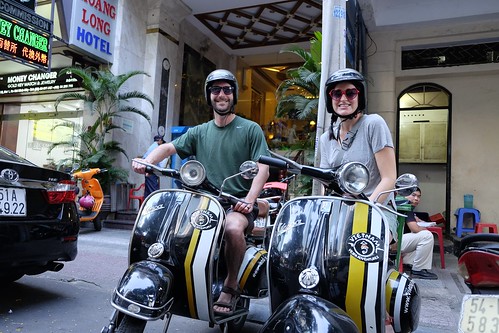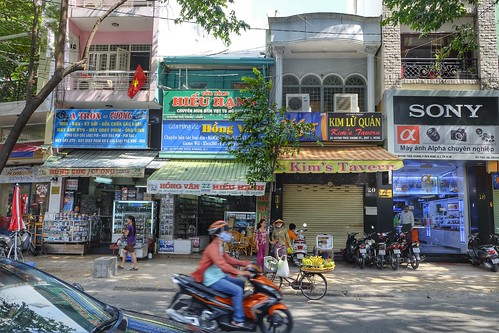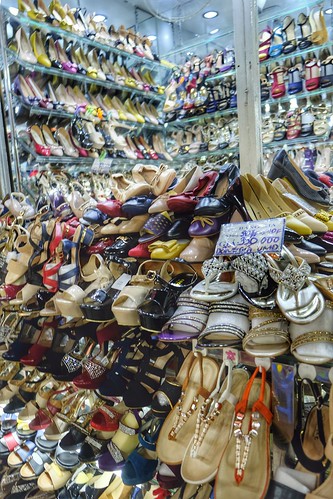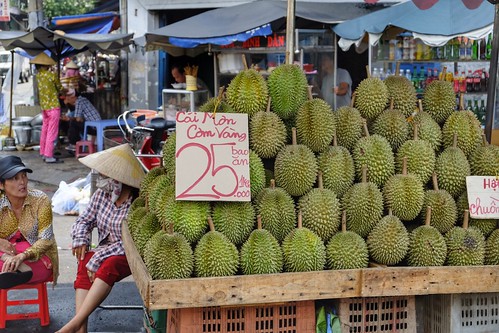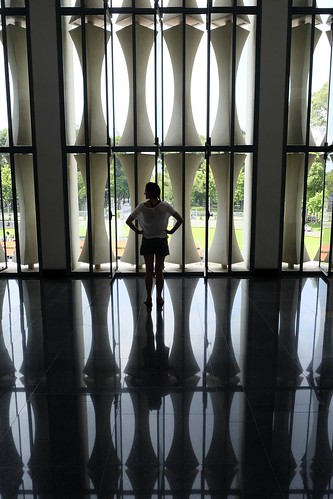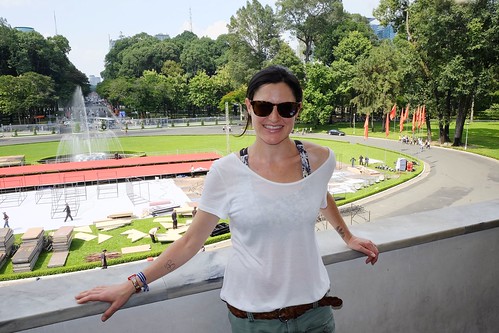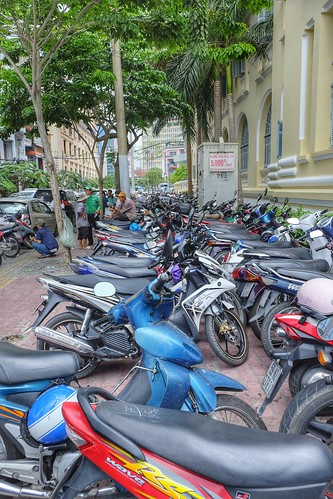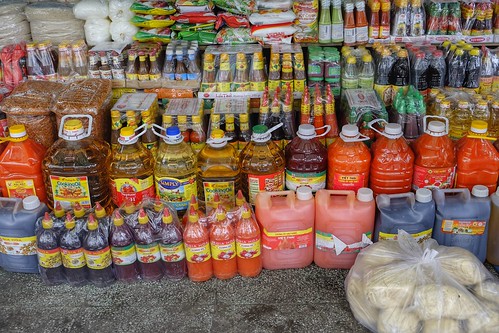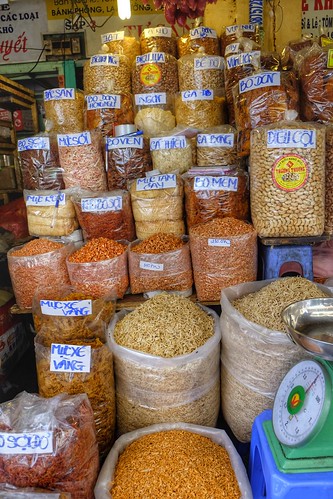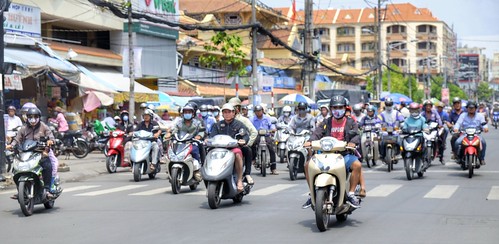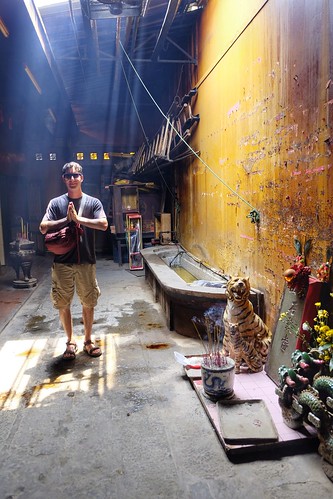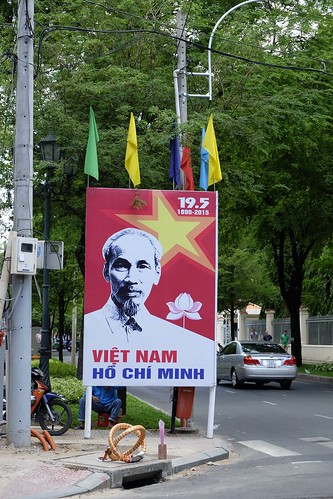* We were in Saigon (Ho Chi Minh City), Vietnam from June 3 – 6, 2015
Guy in a suit on a motorbike.
Woman going to work on a motorbike.
Dad taking 3 kids to school, all on the same motorbike.
Woman cradling a newborn riding side saddle on the motorbike, while her husband drives.
Man hauling crates of funny looking tropical fruit piled to just under his chin, on a motorbike.
Teenagers riding 4 motorbikes across, 3 friends on each, heading out on the town on a warm summer night.
Friend on a motorbike towing a friend on a bicycle, but in traffic with all the other motorbikes.
Motorbikes, motorbikes, motorbikes everywhere! There is a constant whir of traffic, at every intersection, around every roundabout, and we can’t even tell if there are traffic rules. Seems like there are these unwritten, silently understood negotiations of who gives way when and when to actually stop at a stop sign versus when to just blow right through it. It’s completely foreign to us, and we’ve never seen anything like it. Welcome to Asia!
We arrived in Saigon, Vietnam on a warm summer night, a night that would be the beginning of the hottest summer either of us has ever experienced. You can even see it in the pictures! We were sweaty and shiny and almost always in shorts, which was definitely a change from the layers and long underwear we always had on hand in South America.
There was something about Vietnam that was so unique, but so heartwarming to us, straight from the start. I hope we can do it justice through our blog posting. Saigon was our training wheels, our intro to the rich Vietnamese culture of amazing food, people eating all the time, cooking in the streets, picnicking curbside, eating at tiny tables sitting in tiny, short, red plastic stools, unbelievably nice people, the history, the motorbikes, the cheap massages, Buddhist temples, Chinese influenced pagodas, fruit markets, seafood markets, spice markets, clothing markets, shoe markets, markets everywhere, all with a sprinkle of modern day communism on top. And all this for the price of only a few dong, their currency of course! Clearly, Danny had a field day with currency jokes.
Saigon, which is actually currently on the map as Ho Chi Minh City, was the capital of South Vietnam, but we learned quickly that the locals cling tightly to the old name, Saigon. After all, the South was beaten by the Socialist North and their leader, Ho Chi Minh, who went on to be the leader of a unified Communist Vietnam after the war, didn’t exactly have the biggest fan club in the South. We learned so much about Vietnamese history during our time in Saigon. I won’t go into a history lesson here, but here is our basic take away. Vietnam was a French colony for almost 100 years, from the mid 1800s to the mid 1900s. When Vietnamese forces, lead by a young Ho Chi Minh, defeated the French to win independence, the country was actually split in half with the North being ruled as a Communist state by Ho Chi Minh, and the South as an anti-Communist government whose success was plagued by a power struggle among an emperor, a military leader and the US intervention that claimed to be protecting the South from Communism. And you all know what happened from there from the TV show M.A.S.H. and the movie Apocalypse Now.
On our first day, we did a walking tour around town to see the historic French colonial buildings that still line the European-feeling wide boulevards and roundabouts. There are also a handful of historic hotels which played host to European dignitaries during the French occupation, and then to US soldiers and war correspondents during the war. As is common with most Asian cities, the old buildings are interspersed with new fancy shopping areas, packed with the likes of Louis Vuitton, Gucci and Prada. We visited Independence Palace, the former Presidential home for the leader of South Vietnam, which was full of cool mid-century modern decor, but which was also the epicenter of all the power struggles I referred to above. There was a military helicopter replica on the roof, which we could see through a window. It was on display with a circle painted on the roof to illustrate where North Vietnamese forces bombed the palace and entered to depose the then South Vietnamese leader. It was surely military propaganda, memorializing the bravery of North Vietnamese forces, something we became accustomed to seeing throughout our time in Vietnam. Not only is military propaganda still popular throughout Vietnam, but so is Communist propaganda. We couldn’t turn a corner in Saigon without seeing a billboard, or sign on a lamp post, illustrating happiness next to the Communist red star, or a caricature of Ho Chi Minh.
One of the most interesting sites we visited in Saigon was the War Remnants Museum. Wow, talk about propaganda. But we figured, when you win the war, you can write the history in your own country. The museum demonized the US military in a very graphic manner. There were hundreds of photos showing the affects of Agent Orange on generations of Vietnamese families and other atrocities that Vietnam wants their citizens to view as war crimes committed by the US. Outside the museum was a large display of captured American tanks, helicopters and small planes. It was quite an intense afternoon, and while we did consider feelings of being on the “wrong” side of history as Americans, we were definitely grateful for the couple hours of AC in the museum. It was freaking hot and any chance we could get for an escape into AC we took advantage of!
Another interesting history lesson came from our visit to the Cu Chi Tunnels, an elaborate underground tunnel system built in the countryside a few hours drive from Saigon. The information available at the tunnel site, which included an old black and white hardcore propaganda film produced by the Vietnamese government, and the talks we had with our guide, taught us that the tunnels were built by villagers who had to create an underground life for themselves and their local militia in order to defend their land from the invading American soldiers. They could live underground and plan surprise attacks on the enemy, who would be confused as to where the attacks were coming from. After some independent research, I think Danny and I have a slightly different view of the purpose of the tunnels. Although they did get one thing right, the tunnels were a whole underground village, including kitchens, bedrooms and meeting rooms, that provided a sneaky way to attack the enemy. Life could not have been easy down there, as the tunnels were crazy narrow, extremely dark and likely infested with all sorts of bugs and spiders. We got to go down into one tunnel that was even made larger for tourists to be able to fit in and it was pretty tight!
But in reality, it is widely known that the tunnels were built and used by the Viet Cong, the army of Communist North Vietnam, who were simultaneously fighting the US army and the South Vietnamese people, on what should have been South Vietnamese land. Again, though, when you win the war, apparently you get to write the history books as you please.
Aside from all the history lessons, we really did a ton of exploring around Saigon. Here are some other highlights…
- We did a nighttime street food tour where the guides drove us around on Vespa scooters and took us from food spot to food spot until we couldn’t possibly stuff anymore food into our bellies. We loved whizzing through the city on scooters in the scooter traffic at seemingly dangerous speeds, but like mentioned above, the silent scooter language really does work!
- The food!!! We ate so much yummy stuff, it’s hard to even know where to start. We definitely got accustomed to eating street food and figuring out what is safe. I quickly learned the word for vegetarian and could spot a vegetarian food spot from miles away. We also learned how great night markets are in Asia. Night food markets are the place to be!
- On our way out to the Cu Chi tunnels we visited a Cao Dai temple, a crazy ornate temple in the middle of the countryside. The Cao Dai religion is quite popular in Vietnam, and a little difficult to wrap our heads around. From what we gathered, there is a worship of prophets who are said to have translated the truth of god and his divine messages. These prophets include modern day European poets and artists like Victor Hugo. The temple was really a site, with traditional Cao Dai colors and motifs. We caught a service where barefoot followers, dressed in cult-like garb, meditated and chanted together. It was actually really beautiful.
- Outside of the temple we were approached by a group of high school students and their teacher. The kids wanted to practice their English on tourists. It was really heartwarming and we continued to encounter groups like that throughout our time in Vietnam.
- Our hotel was soooo nice compared to most of the places we stayed in South America. We realized we would have it good in Vietnam, inexpensive, comfortable accommodations, how amazing!
- We spent an afternoon wandering around the Chinese market area of town, complete with old Buddhist pagodas to poke around in. We were inside of one of them when a huge downpour started. We sat under the cover of the temple for about 30 minutes, trying to wait out the storm. It didn’t quite slow as much as we’d hoped, so at one point we just made a run for it!
- We bought tickets for a Cirque du Soleil type production, but a bit more amateur, at the French colonial opera house. Nonetheless, it was such a treat, with great acrobatics and dance.
To see the full album of Saigon photos click here.
